I. Introduction
In the intricate tapestry of Greek mythology, Hestia, the revered goddess of hearth, home, and family, embodies a silent but significant presence. Though often overshadowed by the grandeur of other deities, her serene grace underscores an enduring legacy pivotal to the ancient world’s social and spiritual fabric. This article seeks to unfurl the nuanced narrative of Hestia, navigating through her symbolic essence and the quiet yet profound impact she casts upon the mythological and contemporary landscapes. We endeavor to shine a light on Hestia’s understated elegance and reveal how her timeless principles continue to echo in the corridors of modern existence, enriching our understanding of family, unity, and sanctity.
| Origin | Greek Mythology |
|---|---|
| Classification | Gods |
| Family Members | Cronus (Father), Rhea (Mother), Zeus, Poseidon, and Hades (Brothers), Hera and Demeter (Sisters) |
| Region | Greece |
| Associated with | Hearth, Home, Architecture, Domesticity, Family, and the State |
II. Historical Context
A. Origin Story
Hestia, born from the formidable Titans Cronus and Rhea, carries a tale weaved with elements of solemn grace and stoic silence. Ancient texts, like Homer’s hymns, unfold a narrative where Hestia, the firstborn, was swallowed by her father Cronus, only to be later freed in a tale of revolt and celestial warfare. Amidst the famed Olympians, Hestia’s tranquil demeanor set her apart. She was the silent anchor, providing both physical warmth and spiritual solace within the familial and communal spheres.
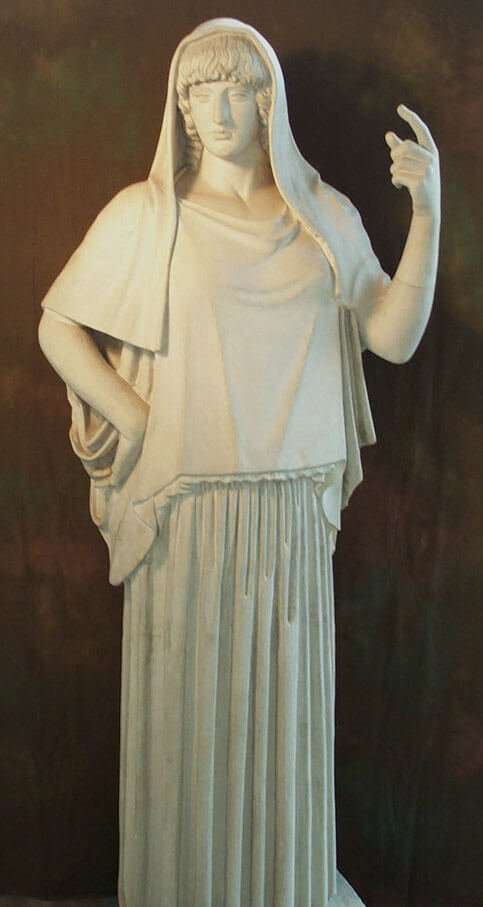
B. Hestia’s Role
In the grandeur of Olympus, where gods and goddesses were often defined by their tempestuous powers and striking manifestations, Hestia’s presence was a soothing balm of peace and stability. She was the guardian of the hearth, not just of the abode of gods but also of mortal homes. Her flame, ever-burning, symbolized the spiritual light and warmth that sustains life. Temples in her honor were scarce; her sanctuary resided in every household hearth, where the fire was a testament to her eternal grace.
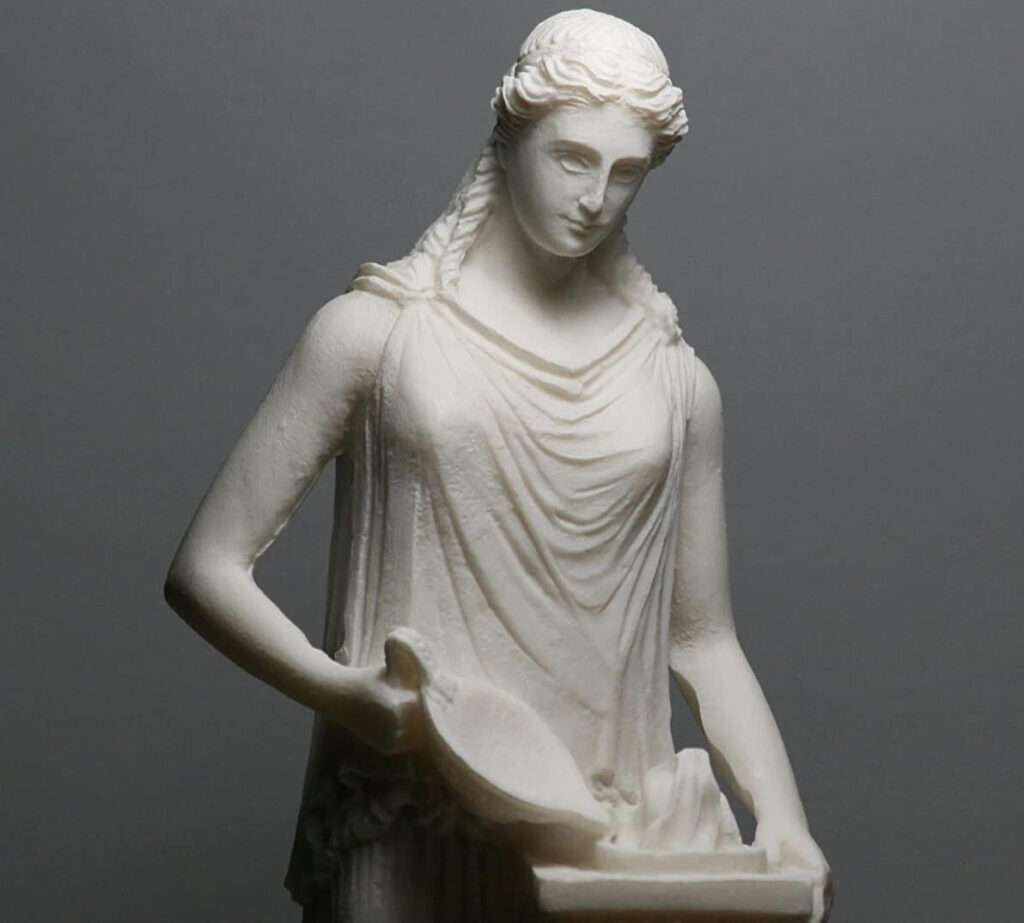
C. Comparison
Hestia’s serene existence offers a stark contrast to her more celebrated counterparts like Zeus or Athena. While Zeus wielded the thunderbolt and Athena brandished wisdom and warfare, Hestia’s arsenal was her unwavering calm, her silent strength. Her power was not in the spectacle but in the enduring, unspoken grace that stood as the bedrock of the familial and societal structures. In an ecosystem of gods characterized by their tumultuous passions and volatile powers, Hestia emerged as the epitome of stability, resilience, and unyielding grace.
III. Hestia’s Symbolism
A. The Eternal Flame
The eternal flame, a cornerstone of Hestia’s symbolism, transcends mere illuminations; it is the embodiment of the unfettered spirit of unity, purity, and sanctity. In ancient Greece, every city-state bore an unwavering flame, a homage to Hestia, illuminating the communal hearth and unifying citizens in a celestial embrace. Archaeological findings, from the remnants of ancient hearths to inscriptions, affirm Hestia’s silent watch over the fires of unity. Each flame, a meticulous dance of light, told tales of a goddess whose grace wasn’t carved in marbled halls but whispered in the silent corridors of every home.

B. Modern Interpretation
In the evolving annals of mythology, where deities often metamorphose, assuming newer contours, Hestia’s eternal flame has found resonance in contemporary discourses. Modern scholars, drawing parallels between ancient traditions and present paradigms, cast Hestia as the muse of spiritual and familial unity. The flame, they propose, isn’t merely a historical artifact but a timeless symbol, echoing the innate human yearning for connection, warmth, and unity. In the quietude of Hestia’s flame, we aren’t just revisiting an ancient myth but are invited to a confluence where history and present, myth and reality, weave an enduring dance of cosmic harmony.
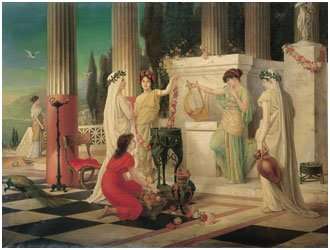
IV. Cultural Impact
A. Ancient Greece
In the sprawling legacy of Ancient Greece, Hestia’s silent echo resounds with a distinct resonance. Rituals and ceremonies, meticulously documented in primary sources like texts and art pieces, are testimonies to her pervasive influence. Every offering, every feast, and each assembly commenced with an ode to Hestia. Her eternal flame, a silent spectator, bore witness to societal norms and communal engagements. The hearth was not just a physical entity but a sacred altar where the divine and mortal realms met, an intersection of the celestial and terrestrial worlds.
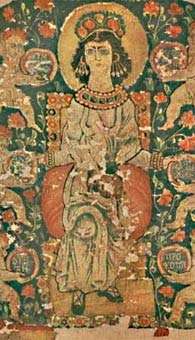
B. The Global Influence
Hestia’s legacy is not imprisoned within the boundaries of Ancient Greece; it permeates through the annals of global mythology and popular culture. An original analysis reveals her silent footprints, from Roman Vesta’s eternal flame to the symbolic hearths in modern literature and art. Her essence, though often unnamed and uncelebrated, continues to echo the innate human longing for sanctity, unity, and peace. In the world’s tumultuous dance, Hestia emerges not just as a Greek goddess but as a universal entity, a silent guardian echoing the unsung melodies of unity and peace.
V. Real-life Applications
A. Family and Home
In the contemporary landscape where the dynamics of family and home are ever-evolving, the values espoused by Hestia emerge as an anchor of stability. Psychologists and sociologists alike echo the intrinsic merit of the sanctity of the hearth, a space where individuals are not just physically but emotionally and spiritually nurtured. The hearth, reminiscent of Hestia’s eternal flame, becomes a sanctuary of connection, understanding, and mutual respect. Here, conversations are not just spoken but felt, and relationships are not built but born, echoing the timeless grace of a goddess who silently weaves the threads of unity.
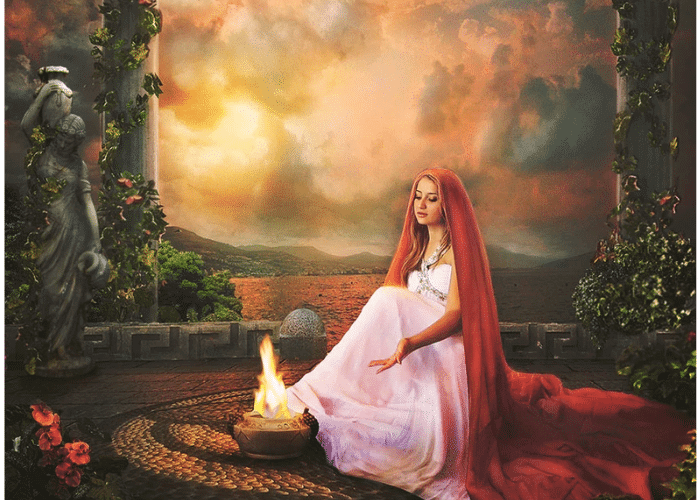
B. Financial/Health Decisions
In the intricate dance of life where critical decisions contour our journey, the principles of stability and security, reminiscent of Hestia, assume paramount significance. In financial terrains, her essence translates to a balanced approach, a harmonious confluence of risk and restraint. Regarding health, her silent whisper is a reminder of the sanctity of wellbeing, a journey where the physical, emotional, and spiritual realms are in unison. Hestia, in her silent grace, emerges not just as a mythological entity but a living ethos, guiding critical decisions with a whisper of balance, harmony, and sanctity.
VI. Conclusion
Hestia’s silent elegance, embedded in the annals of Greek mythology, transcends historical narratives to resonate within the fabric of modern existence. We retraced her origins, delved into her symbolic eternal flame, and explored the profound cultural and practical implications of her serene presence. This journey reveals Hestia not merely as a goddess of the hearth but as a timeless symbol of unity, stability, and sanctity. As we step into the contemporary dance of rapid change and evolving paradigms, the silent echoes of Hestia’s grace remind us of the unyielding power of connection, the sanctity of the familial hearth, and the silent strength that resides in stability and unity.
